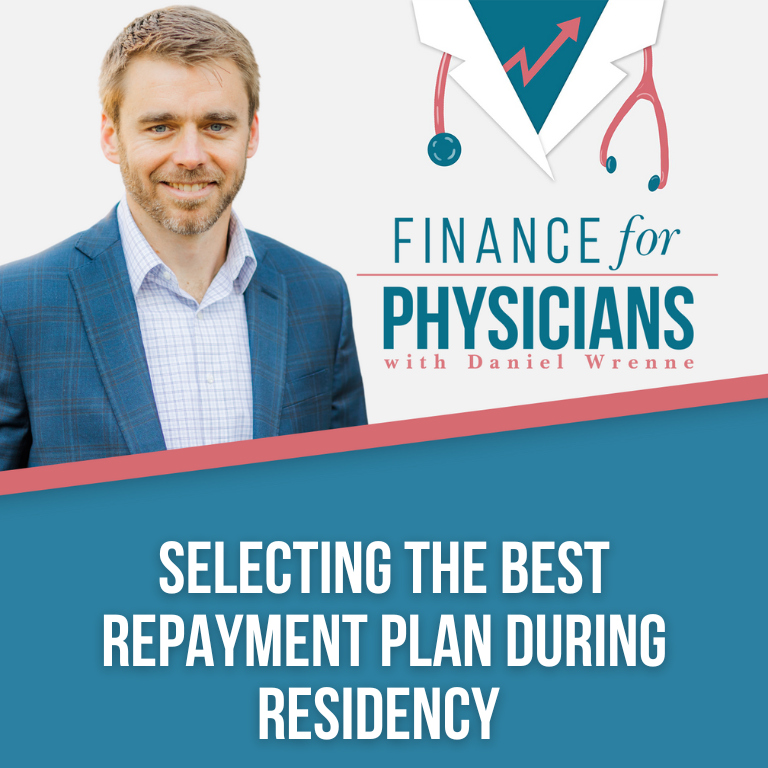Did you know there are 8 different federal loan repayment plans? The differences are confusing, yet very impactful. Given the stakes, it’s important to understand how your federal student loan repayment options work so you can select the best plan for your situation. Here is what you need to know as you approach this decision:
Repayment Plan Options For Resident Physicians
For this article, we will cover the three most common repayment plan options for residents. They are:
- Income Based Repayment (“IBR”)
- Pay As You Earn (“PAYE”)
- Revised Pay As You Earn (“RePAYE”)
All of these plans are calculated based on income, qualify for Public Service Loan Forgiveness (“PSLF”), and can work well for certain residents. But before we look at each in more detail, let’s talk about which ones you qualify for.
Qualification for Income-Driven Repayment Plans
IBR is available to everyone with FFEL and Direct student loans.
PAYE is only available to “new borrowers” who borrowed their first federal student loan after October 1, 2007, and that borrowed a Direct Loan after October 1, 2011.
RePAYE is open to “old borrowers” – unlike PAYE – but it’s only offered on Direct student loans. However, you can consolidate certain non-RePAYE qualified loans, like FFEL loans, into a new Direct consolidation loan and become eligible for RePAYE.
So, most residents with older loans (pre-2007) would be eligible for IBR or RePAYE (sometimes requires consolidation to qualify for RePAYE). And most with newer loans are eligible for all options.
Selecting The Best Repayment Plan
If you’re an “old borrower”, you’re likely deciding between IBR and RePAYE. Here are several of the advantages and disadvantages of each.
IBR advantages over RePAYE
Payment capped at 10 yr standard payment – compared to no cap on RePAYE
Ability to exclude spousal income by filing taxes separately
RePAYE advantages over IBR
Payment is 10% of discretionary income – compared to 15% for IBR
50 to 100% of unpaid interest is forgiven
The IBR payment cap is nice for residents going for PSLF who expect to have very high income when in practice, especially those with very high loan balances. However, most residents will benefit more from the 10% payment calculation that comes with RePAYE. Let’s say you are a single resident with $250,000 in total outstanding principal. Remember that with PSLF, every dollar of payment savings equals another dollar in your pocket that you keep. If you expect to earn $250,000 per year in-practice, you will max out IBR at $2,776/mo. However, under RePAYE, your payment will be $1,932/mo or $844/mo less than the IBR payment. On the other hand, if you expect to make $500,000 per year, your IBR payment would not change. But your RePAYE payment would jump to $4,015 and effectively cost you $1,239 more every month.
The IBR spousal income exclusion can also work well for those residents going for PSLF with high-income spouses. In order to calculate the PSLF cost-benefit, you must add the student loan costs under IBR (filing separately) to the tax costs of filing separately. This total is the net costs of filing separately under IBR. Compare this with the student loan cost of filing jointly and going for IBR or RePAYE. The lowest net cost will provide the most PSLF value. This should be an annual exercise conducted every year until you reach forgiveness.
If you’re already in IBR and are considering switching to RePAYE, you should consider several other factors, such as the one month forbearance and interest capitalization.
On the other hand, RePAYE can work well for residents not going for PSLF. When PSLF is off the table, interest rates become very important. The RePAYE interest forgiveness (50-100% of unpaid interest) effectively lowers your true interest rate, especially when income and corresponding payments are low, often to levels far below what’s available with private refinance.
RePAYE is also nice for those residents that are unsure about PSLF because they get the interest subsidy and qualify for PSLF.
Newer borrowers are normally deciding between PAYE and RePAYE, both of which use the 10% of discretionary income formula. Here are several of the pros and cons to consider.
PAYE advantages over RePAYE
Payment capped at 10 yr standard payment compared to no cap on RePAYE
Ability to exclude spousal income by filing taxes separately
RePAYE advantages over PAYE
50 to 100% of unpaid interest forgiven
If you have access to PAYE and you’re 100% certain you will qualify for PSLF, PAYE is the way to go. You get the lower payment percentage, the payment cap and the ability to file taxes separately and exclude spousal income. You miss out on the RePAYE interest subsidy but who cares about interest when it will all be forgiven.
However, ten years is a long time to plan out with 100% certainty. And, in our experience most resident are unsure about PSLF. As you introduce more uncertainty into the equation, the RePAYE interest subsidy advantage starts to become a lot more appealing. If a resident owes $300,000 and has an interest rate of 6%, this will generate $18,000 in new interest over one year. However, if their payment is only $2,000 for that same year, and they’re getting 50% unpaid interest subsidized via RePAYE, it will save them $8,000 in interest over the course of the year. If they don’t end up going for PSLF, this interest savings become real money in their pocket.
When Do I Need to Choose My Plan?
The best time to come up with your plan is now. Starting later in medical school and continuing into residency is when the most impactful student loan decision are made. If you’re unsure where to start, and would like expert advice, reach out to one of the financial planners in our network and learn more about how they can help you navigate this major decision.
